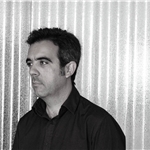It is difficult today to understand architecture in its entirely without some forms of visual expression, as is photography. In a world dominated more by images than by ideas, where to have some banal experience is the same to photograph it, the architecture is not out this tendency. It is necessary ask us what was the historic moment and the circumstances that allowed both –the ‘old’ architecture and the ‘young’ photography- began to be understood, to collaborate and become almost essential one for the other. The analysis of the historical period choosen (1925-1939) shows us something about the origin of the relationships between these two arts, their conflicts, the construction processes of analytical look and their usual broadcast media.
There aren’t many trials about these issues, and therefore, there are still some questions and gaps about the identity of their protagonists and its relationships. Also about the value of the photography in the development of the 20’s and 30’s magazines and, finally, about the importance of these magazines in diffusion of new architectural concepts of these years. Probably, modern architecture only can be understood entirely when it was studied together with photography, film, advertising, and others forms of visual expression.
The thesis analyzes the crucial role played by photography in the construction and development of the image of modern architecture. The historical period studied begins in 1925, the year in which it took place the International Exhibition of Decorative Arts in Paris –Melnikov-Ródchenko’s Russian pavilion, in which László Moholy-Nagy publishes Painting, Photography, Film, and in which appears the revolutionary –by its size and performance- Leica photo camera. And ends in 1939, with spanish civil war and second world war, that led to exile and death of many of its protagonists (José Luis Sert, Margaret Michaelis, Luis Lladó, José Manuel Aizpurúa y Torres Clavé), with rupture in cultural processes initiated.
This work pays special attention to what happened in Andalucía in those years, investigating about the names of professionals who worked in this lands, and showing the stereotyped image of this region, transmitted all over the world by postal cards business. Is the result of the study and compilation of the images recovered by the author from the archives which preserves the visual memory of that time and the names of the protagonists who made it possible.
Among them, for their professional relationship with the GATEPAC, the key figure was the Austrian based in Barcelona Margaret Michaelis and, to a lesser extent, Luis Lladó from Madrid, commissioned to document some of the main modern examples in Andalucía. Both remained anonymous until just over a decade. However, tracking work on archives that keep the memories of the decades of modern architecture in Spain (1925-1965), still has backlogs that, probably, will provide interesting surprises along the research work.
Futhermore, this thesis reflects on the similarities detected between photographic processes and the projectives, and also about the role that photography plays as a valid tool in the project process, through some examples of contemporary authors. The architecture is mainly expressed graphically, and synthesis capabilities provided by a single photograph, is hard to beat as a vehicle of transmission of the project central idea. Every time are more the moments when photography appears on the development of a project, not only to document its final look. At the same time, the borders between the two disciplines-photography and architecture, and between their protagonists constantly intersect, blurring its limits more and more frequently.
Maybe looking back to the nuclear period analyzed, we can extract positive implications to help us mitigate the excesses of recent times, in which the tendency to reduce architecture to images has had a doubtless negative effect on professional practice. And this will help us to rethink the role to be played by both photography and traditional architectural publications, in a networked world where the information travels so fast that it gets old what previously based its success on being absolute novelty.






